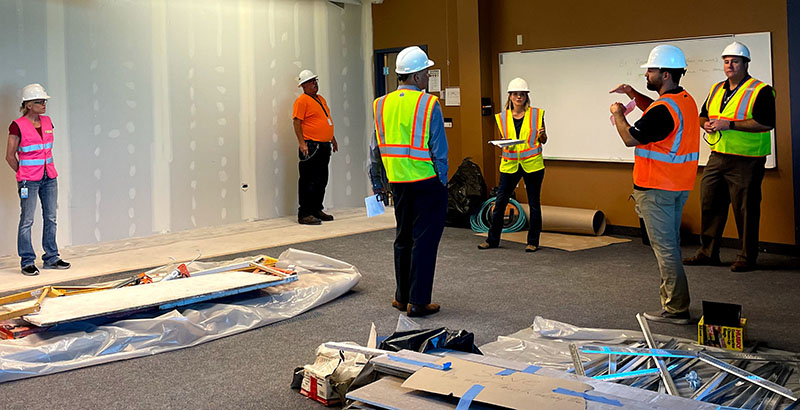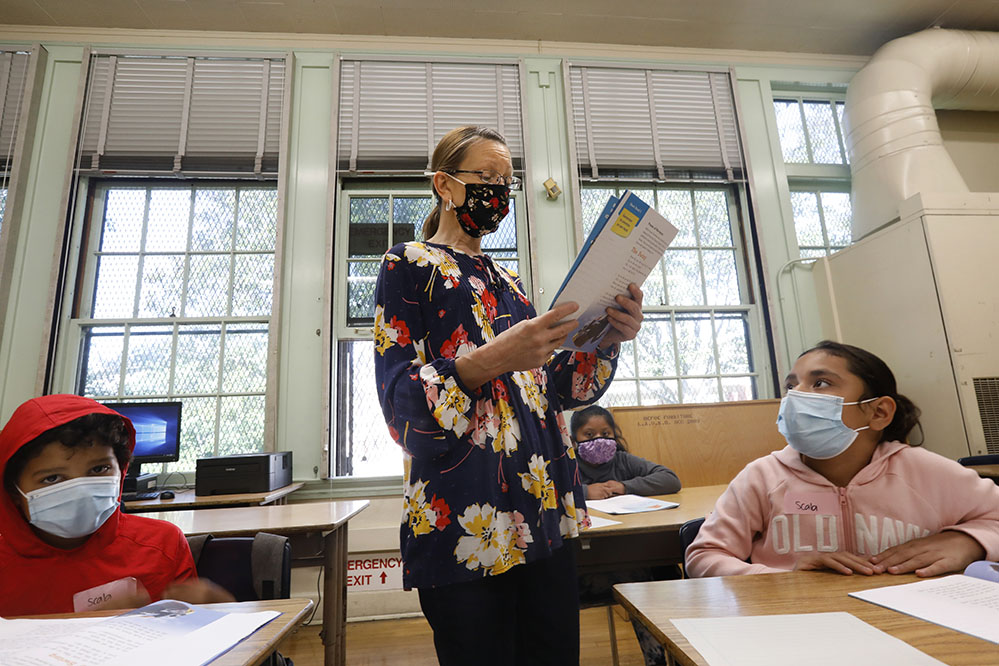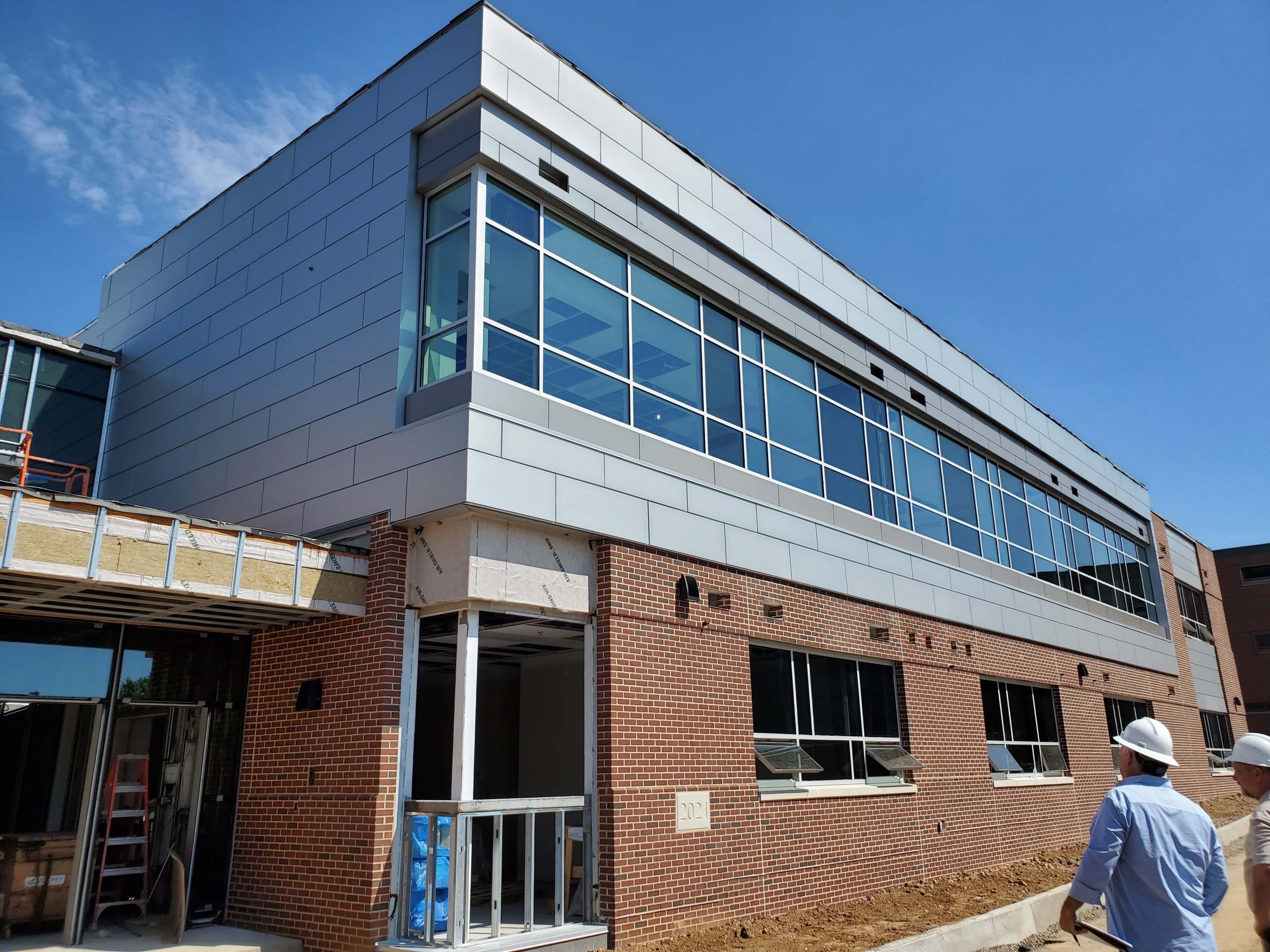Amid Historic Federal Windfall, School Leaders Find that Soaring Inflation is Curbing Their Ability to Purchase, Hire and Build

Get stories like this delivered straight to your inbox. Sign up for The 74 Newsletter
With 28 years in school nutrition behind her, 12 as director of food services in Plymouth-Canton Community School, near Detroit, Kristen Hennessey has meal planning down to a science. She can usually look at a menu, estimate the cost and count on having all the ingredients and supplies ready for preparation.
But now, with chicken and beef prices up, a worldwide shortage of packaging materials and a dearth of long-haul truckers, she’s not as sure what she’ll be serving the district’s 18,000 students this fall. And she won’t be surprised if distributors start adding transportation surcharges “to stop the bleeding on their end” — something she hasn’t seen since the Great Recession.
“It’s a domino effect,” she said. “We’re at the point now where we don’t even know what’s going to come in the back door.”

Food services are just one aspect of school operations affected by inflation, which is experiencing a 13-year high. Wages are climbing because districts can’t find enough employees to drive buses or provide students additional academic support. Price hikes on materials are causing some districts to hit pause on construction projects and districts are paying higher wages for teachers to help students catch up.
At a time when the American Rescue Plan is flooding school districts with more federal money than they’ve ever had, educators are slowly awakening to the reality that those funds might not go as far as expected and that inflation may have a lasting impact on their regular budgets as well .
“School districts are like little cities. You’ve got food service. You’ve got transportation. You’ve got maintenance. Inflation across the sectors will impact all those areas,” said Charles Carpenter, chief financial officer for the Denver Public Schools.
The economic indicators are clear. This summer, the Consumer Price Index — which measures changes in what people typically pay for goods and services — saw its largest one-month and 12-month increases since 2008, according to the government’s Bureau of Labor Statistics.
Experts attribute the rise in inflation in part to the rollback of pandemic restrictions: Consumers are traveling, eating out and shopping more, which is driving up prices. But there’s not enough supply to meet the demand.
The debate is over how much to worry about it. Some have warned that President Joe Biden’s policies — the partisan relief bill that passed in March and his big-ticket infrastructure packages — will hurt the economy, while others argue this period of inflation is temporary and won’t spiral out of control.
Either way, Carpenter is closely monitoring costs of raw materials like lumber and copper as the district moves forward with building new schools and adding air-conditioning to 24 sites over the next three years.
Contractors “are bidding on our projects knowing that they’ll see price increases,” he said. “Do you try and push forward now and lock in a price or wait and it could be worse?”
Some districts are discussing whether to modify designs to lower prices and others have decided to pause projects because contractors can’t provide solid cost estimates. The St. Clair R-III School District, southwest of St. Louis, decided in June to delay construction on a performing arts center and a bus facility until costs stabilize. “It has become much more difficult to obtain competitive, cost-effective bids for construction projects,” Superintendent Kyle Kruse said in his report to the board.
‘Can’t find the people’
While districts might be able to defer construction or renovation, they can’t put off addressing students’ academic needs — especially given the extreme learning loss that often accompanied more than a year of remote learning.
“We’ve got this short-term demand for services to mitigate instructional loss and a shortage of labor willing to put in that time,” said Jonathan Travers, who leads consulting services for Education Resource Strategies, a nonprofit that helps districts leverage resources to improve student learning.
That’s why in addition to price hikes on materials, districts are seeing higher labor costs. Some have offered bonuses and even doubled hourly wages to attract summer school teachers. The danger for districts, he said, is that unions might expect to maintain those higher wages when they return to the bargaining table to negotiate future contracts.
In Plymouth-Canton, Hennessey still has 20 positions to fill before fall. She said entry-level school nutrition employees earn about $11 per hour, but that doesn’t come close to the $15 they can earn at McDonald’s. And districts nationally are struggling to find school bus drivers even with higher pay.
“It’s great to have all this money,” said Uri Monson, chief financial officer with the Philadelphia schools. “But if you can’t find the people to do the work — even if you’re going to pay them — that’s a problem.”

Districts aren’t the only ones feeling the pinch. A recent survey from the accounting firm KPMGshowed parents estimate they’ll spend an average of $20 more on school supplies this fall. Parents of young children, many of whom delayed enrollment last year, anticipate spending $156 per child — a 32 percent increase over last school year.
What’s eating up much of their back-to-school spending? Shoes — a necessity some may have skipped last fall when many districts opened remotely.
One relief for families is that the increased costs come at the same time the majority of households with school-age children are receiving monthly Child Tax Credit payments of $250 to $300, approved as part of the relief bill.
‘Calm the markets’
Some districts plan budgets to allow them to ride out periods like this. The Philadelphia district signs fixed contracts for expenses such as fuel, food services — and, of course, labor.
“We occasionally get criticized when we do long-term guaranteed pricing contracts,” Monson said. “No one is going to complain right now. This is exactly why we do it.”

But he acknowledged that the soaring prices are hitting contractors hard as well as those waiting for supplies. “The cost of wood and basic materials has been out of control,” Monson said. And with shipping delays, he’s urging departments to allow longer lead times for deliveries. “It’s really hard to order something on Friday and expect it to be there on Monday.”
That’s because the shortages and empty store shelves most Americans experienced at the beginning of the pandemic haven’t really gone away.
“There are shipments from Asia that have been stuck at the Los Angeles port since October” — mostly because of labor shortages, said Charlie Andrews, a senior cost manager with Rider Levett Bucknall, which advises school districts on construction costs and provides project management services.
When contractors face unforeseen costs, such as tariffs, they often pass those on to school systems.
Mary Filardo, executive director of the 21st Century School Fund — which advocates for modernizing school facilities — said cost fluctuations help make the case for Biden’s $100 school construction plan, a combination of direct grants and bonds. The proposal didn’t make it in the bipartisan agreement with Republicans, but is expected to re-emerge in the details of a larger infrastructure package Democrats have proposed.
“Districts need long money,” Filardo said. “It will calm the markets somewhat and give them more leverage as they plan and implement projects.”
Get stories like these delivered straight to your inbox. Sign up for The 74 Newsletter

;)
